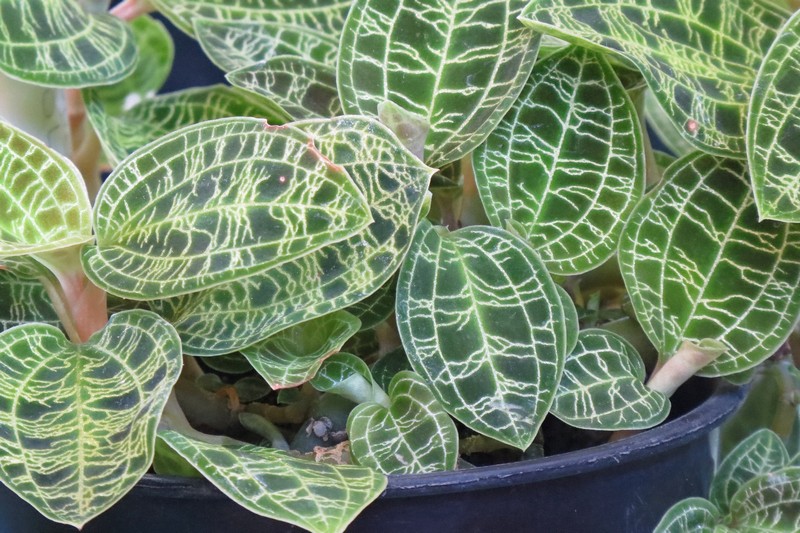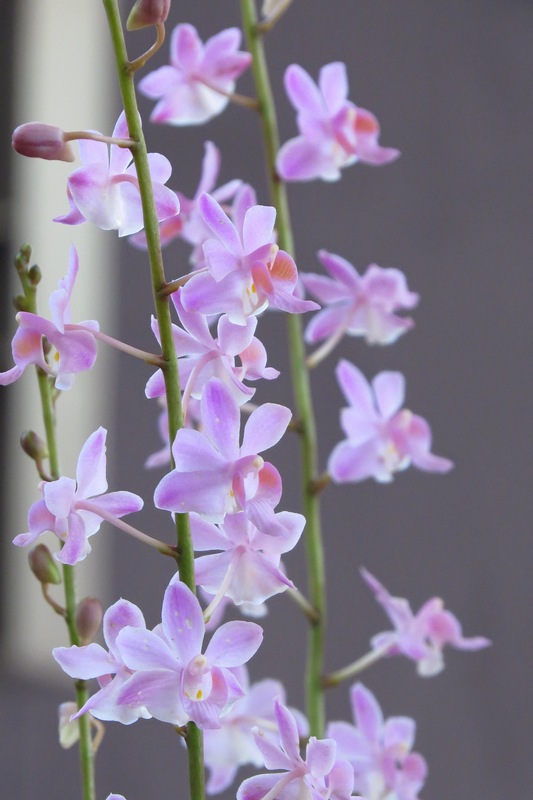The first problem that arises when showing orchids is, well, having any orchids to show. Your precious plant may have buds, but Murphy’s Law decrees those buds will open after the show or have already flowered and be past their best by the day of judgement.
A richly scented stem of Stanhopea oculata drew much attention at the April 2014 Bay of Plenty Orchid Show in Te Puke, with plant owner Conrad Coenen of Apata, near Tauranga, saying it was a rare sight.
“Not that I mean it’s a rare plant,” he hastened to add, “just that it’s rare to see it a show as the flowers last for only two or three days. The planets have to align to have it open on just the right day.” He joked that he’d been breathing on the buds to try and hasten their opening!
This month is an especially busy time in the orchid world – the Tauranga show this weekend (September 9-11) is followed by the national Orchid + Flower Show in Auckland (September 22-25). Both shows offer massed displays of flowering plants and the chance to buy plants not seen in garden centres, as well as getting practical advice from experienced growers.
Orchid societies are a wealth of accumulated knowledge and members are only too happy to share what they’ve learned as they have lavished care, attention and patience on their plants, sometimes for decades.
Last year a staff member in the refurbished Peter Black Conservatory in Palmerston North’s Victoria Esplanade casually pointed to a Vanda orchid in a hanging basket and told me it had recently flowered – for the first time in 28 years! He believes better heating, fewer draughts, and new glass in the structure finally provided the right conditions for the warm-growing beauty.
Fortunately, one of the largest families of flowering plants also has members that are decidedly unfussy, and some that are downright tough, including Bifrenaria harrisoniae and the Australian native Dendrobium speciosum (rock orchid).
There are also those that can flower at any time of the year and may flower more than once in a year, including the easy-care Restrepia orchids, Maxillaria variabilis, Coelogyne fimbriata and Cattleya Quinquecolor, while the blooms of the fashionable Phalaenopsis (moth orchid) last for months.
Te Puna Quarry Park near Tauranga has an outstanding display of Cymbidium orchids – on now – thought to the largest outdoor planting of Cymbidiums in the southern hemisphere. They thrive in next-to-no top soil and receive no extra fertiliser or irrigation, beyond guano and rainwater. Volunteers have just rolled them into place among the rocks and left them to get on with it.
Tauranga Orchid Society president Barry Curtis helps look after the orchids at the park and is a keen Cymbidium grower himself, winning the top award at the 2013 national Orchid Expo with the miniature Cymbidium Cricket. His secret to success? One of them is that when Barry puts a ‘Cymbid’ in a new pot, he half fills the pot with bark and adds a handful of crumbly-stage horse manure before topping off the bark. The plant’s roots are fed each time the pot is watered and Barry reckons they lap it up.
Other ‘cool-growing’ orchids (6 degrees C on the coldest night, although may take as low as 2; up to 30 on the hottest day) include Coelogyne, Dendrobium, Epidendrum, Laelia, Masdevallia, Ondontoglossum, Paphiopedilum (slipper orchids), Pleurothallis, Sarchochilus and Zygopetalum, and within the hybrids of just these few types there are great varieties of flower shape and size, flower colour, and plant size.
There are some useful books by New Zealand authors, keep an eye out at book fairs and in second-hand shops for volumes by Ross Macdonald (including Cool Flowering Orchids Throughout the Year), and the late I D James (including The New Zealand Orchid Grower).
All orchids have the same basic requirements – good air movement, regular water and food, and the right amount of warmth and light. Joining an orchid society means ongoing, free advice as to how to interpret these requirements for your conditions, plus there’s practical help if problems arise, visits to members’ collections, access to a library, guest speakers and the camaraderie of others suffering from the same ‘disease’.
The Tauranga Orchid Show is at the Racecourse (Cameron Rd, Greerton), $3 entry for adults (under-12 free). You’ll see the display we’re entering into the national expo, a mass of flowering plants, there are plants for sale, repotting demonstrations, advice from expert growers and a café and raffles. See you there – do come and say hello!
- Tauranga Orchid Society meets on the third Tuesday of the month, 7.30pm, Wesley Church Hall, 13th Ave, Tauranga. Visitors always welcome. Contact Sandra.
- Bay of Plenty Orchid Society meets on the second Sunday of the month, 1.30pm, Masonic Hall, Oxford St, Te Puke. Visitors always welcome. Contact Faye.



























































